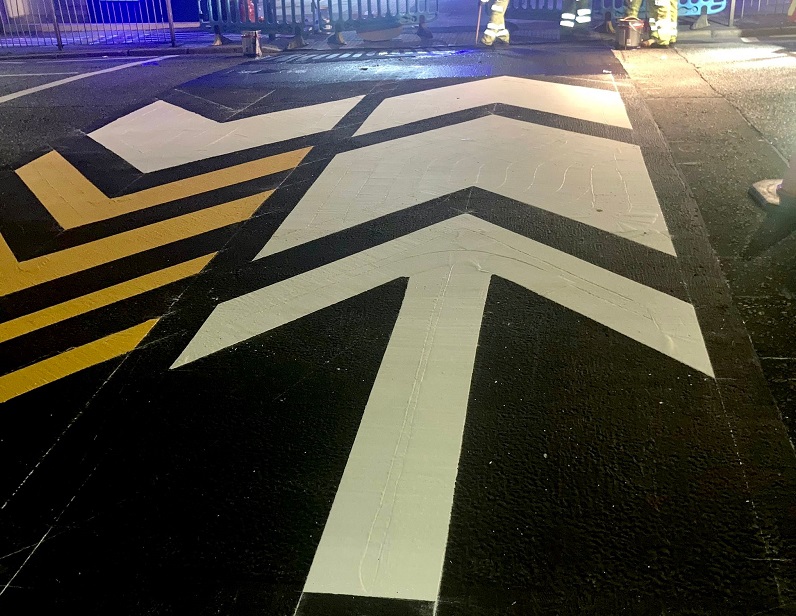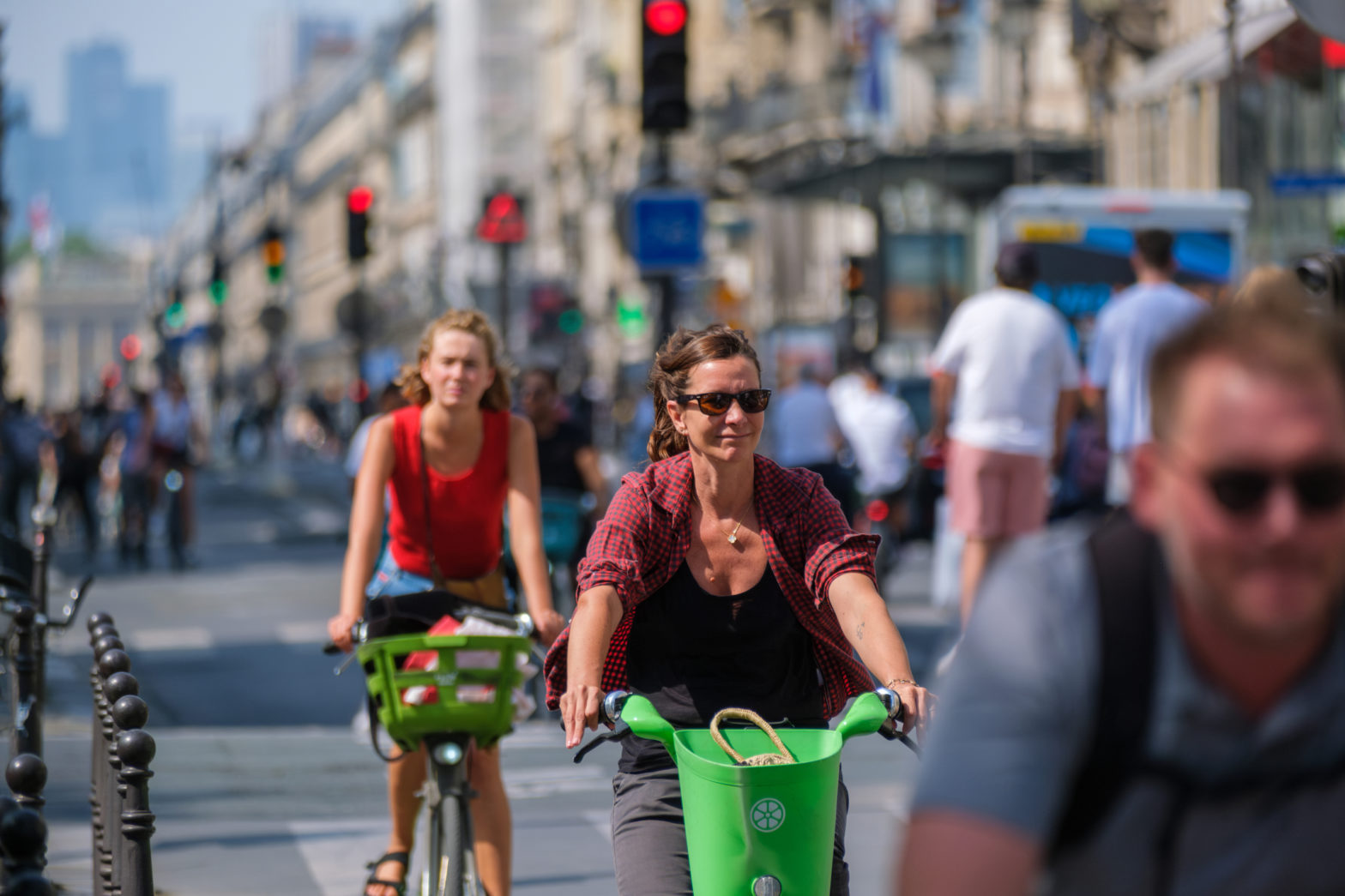
Photo: So-Mo
Cities trial colourful ‘nudge’ pedestrian crossings
19 October 2021
by Sarah Wray
Two bold new pedestrian crossings designed to ‘nudge’ safer behaviour are being piloted at collision hotspots in the UK cities of Liverpool and Hull. Artificial intelligence-powered video analytics will be used to monitor results.
Liverpool was selected as it has one of the highest rates of adult deaths and serious injuries in pedestrian collisions in the UK, at 99 per 100,000 people. In Hull, pedestrians represent 14 percent of all road casualties and 26 percent of those killed and seriously injured, and the city was chosen as it has a comparable road network and socio-demographic profile to Liverpool.
The crossing design being trialled in the cities’ centres is inspired by pop art, featuring colourful graphics and words, and light boxes attached to signal poles. At the Hanover Street/Bold Street crossing in Liverpool, 14 adult casualties have been recorded in the last five years, most of them people on a night out.

Nicola Wass, Chief Executive of So-Mo, the behavioural science company that developed the crossing designs, said: “People who are in the city on a night, a high proportion of them will be under the influence of drink or drugs…When the brain is in that state, you might be looking but not necessarily seeing everything.
“The crossing was designed to be eye-catching, bold and playful, and to align with the goals of pedestrians who are out in the city at night, which is to have fun and to feel good about themselves, which makes these crossings more likely to be noticed.”
The design has evolved from the early artist mock-ups, based on prototype feedback.
Speedy boarding
The second crossing uses a “faster boarding” design and is being trialled on high streets on the outskirts of the cities, where data showed that people who were being hit tended to live very close to the site of the collision.
“When you’re very familiar with the location, you tend to underestimate the risk. Secondly, as humans when we’re very familiar with an environment, we’re able to move about that environment on a kind of autopilot,” said Wass.
This crossing is designed with yellow and white arrows, which have been compared to Mario Kart, airport speedy boarding and travelators.
“That’s exactly the intuitive response we want,” she commented. “We’re trying to draw the attention as promising not only the safest but also the quickest way to cross.”

The trials will run for two weeks and will specifically measure – via AI analytics on CCTV footage – whether there is an increase in the number of crossings made inside the crossing area and the number of pedestrians using the crossing correctly.
Wass said: “People are not identifiable, but we are able to delineate between different types of road users, their direction of travel and crossing behaviours, with high reliability.”
Councillor Dan Barrington, Liverpool’s Cabinet member for Transport and Climate Change, said: “Far too many people lose their lives or are seriously injured in Liverpool, with one in five of all adult pedestrian casualties happening close to pedestrian crossings. It’s a problem we’ve been tackling and have had some success with over the past decade, but we need to be radical to make the progress we all want.
“I like the fact that these dynamic crossings So-Mo have developed are looking at the whole picture – the environment, the location, behaviour. A huge amount of work has gone into their designs and I look forward to seeing the results of the trials and whether they will change the public’s approach to the crossings.”
Resident concerns
Not everyone is impressed, though, and the initiative has come in for some criticism on social media, with residents concerned the crossings could be distracting for drivers and unsafe or inaccessible for people with disabilities. Some called them “a waste of time and money”, “insane” and “dangerous”.
Wass said the only way to see what works is to run real-world trials.
“First of all it’s great that people are talking about it – If nothing else, it has brought awareness to the idea of pedestrian crossings,” she said. “The other thing is that it’s human nature to look at something like this and seek to measure its value by either whether we like it or not or by trying to understand how it works and to rationalise it. That’s far less important than the impact on people’s behaviour.”
She said that engineers, road safety officers and people with disabilities had been consulted on the designs and there will be specific engagement sessions for people with disabilities and neurological conditions.
“We don’t want to solve a problem for one group of road users only to make it worse for others,” she commented.
The trials are supported by the Road Safety Trust, which has used funds raised from speeding fines, along with additional funding from Merseyside Road Safety Partnership. Agilisys is providing data analysis.
The results of the trials will be shared for other cities and road safety professionals via events and publications from later this year.






